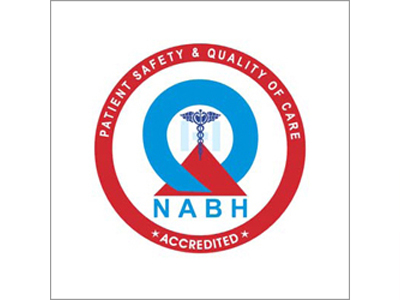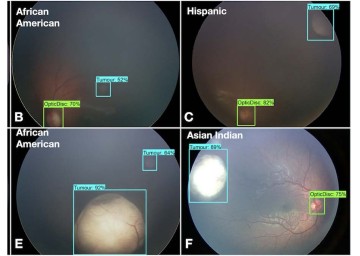In a collaborative study by LVPEI and the Wills Eye Hospital, Drs. Vijitha S. Vempuluru, Swathi Kaliki, Carol L. Shields, and others developed an AI tool that can detect retinoblastoma in various ethnicities.
Retinoblastoma is the most common type of eye cancer. This malignancy develops in the innermost layer of the eye (the retina) in children, often two years old or younger. Early diagnosis of the tumor is crucial for the child’s survival, even saving their sight in some cases. Fundus photography is an important step in confirming the retinoblastoma diagnosis. This non-invasive procedure uses a specialized camera to take high-resolution images of the fundus, the interior surface of the eye. Detecting retinoblastoma depends on the subjective assessment of the ophthalmologist analyzing the images to identify variations and anomalies on the fundus surface and in the distribution of blood vessels and tissues. These are tasks that are ripe for automation, particularly with new-age Artificial Intelligence (AI) and Machine Learning (ML) tools.
AI has opened up new image processing and diagnostics frontiers. AI algorithms can detect subtle symptoms of diseases that may be too faint for human assessment. Such tools have been developed to detect eye diseases, such as diabetic retinopathy, from fundus images. Artificial Intelligence and Machine Learning in Ocular Oncology, Retinoblastoma (ArMOR), developed by LVPEI and TechSophy Inc., is the first AI model that can detect retinoblastoma from fundus images. It was able to effectively detect retinoblastoma in Indian patients. However, a good diagnostic tool should be applicable to all humans, not just one ethnicity. This comes with new challenges. For instance, differences in melanin—the pigment that colors our skin—in the retina can hinder AI’s ability to identify tumors. To broaden the application of AI-assisted diagnosis, ArMOR must be able to detect retinoblastoma in all ethnicities with accuracy.
In a new study published in the journal Cancers, Drs. Vijitha S. Vempuluru, Swathi Kaliki, and others from LVPEI, in collaboration with Dr. Carol L. Shields of the Wills Eye Hospital, Philadelphia improved ArMOR and tested its ability to detect retinoblastoma in a multiracial patient cohort. ArMOR was refined with the help of researchers from The International Institute of Information Technology, Hyderabad, and Bourntec Solutions Pvt Ltd. The researchers used deep learning and geometric calculations to extract various features of retinal tumors, such as tumor seeds, blood vessels, hemorrhage, etc., that an AI can identify.
A machine learning tool, XGBoost, was then used to train ArMOR by ‘feeding’ it data (2473 images) from 210 eyes, most (73%) of which were from white American patients. They ‘taught’ ArMOR to accurately classify retinoblastoma based on tumor size in different ethnicities. Around 17% (427) of the images had no retinoblastoma, which is necessary for training the model in identifying false positives. After training, ArMOR detected retinoblastoma from any fundus photo in this study cohort of mixed racial groups with 97% accuracy. It also identified the category of retinoblastoma (A-E) with 98%, 93%, >99%, 94%, and 93% accuracy, respectively. In category A, the earliest stage of the disease, the tumor presents a subtle sign, less than 3mm in size and away from the fovea. These accuracy rates underscore ArMOR’s potential to accurately diagnose retinoblastoma as early as possible.
'We began this journey by developing an AI model for diagnosis of retinoblastoma which was validated in the Asian Indian population,' notes Sr Swathi Kaliki, Head of the OEU Institute for Eye Cancer at LVPEI and the corresponding author of this paper. 'However, we realized that the same AI model cannot be used for all races. Through this study, we refined our existing AI model so that it can be used in all races irrespective of the color of the fundus.'
Citation
Vempuluru, V. S., Viriyala, R., Ayyagari, V., Bakal, K., Bhamidipati, P., Dhara, K. K., Ferenczy, S. R., Shields, C. L., & Kaliki, S. (2024). Artificial Intelligence and Machine Learning in Ocular Oncology, Retinoblastoma (ArMOR): Experience with a Multiracial Cohort. Cancers, 16(20), 3516. https://doi.org/10.3390/cancers16203516



